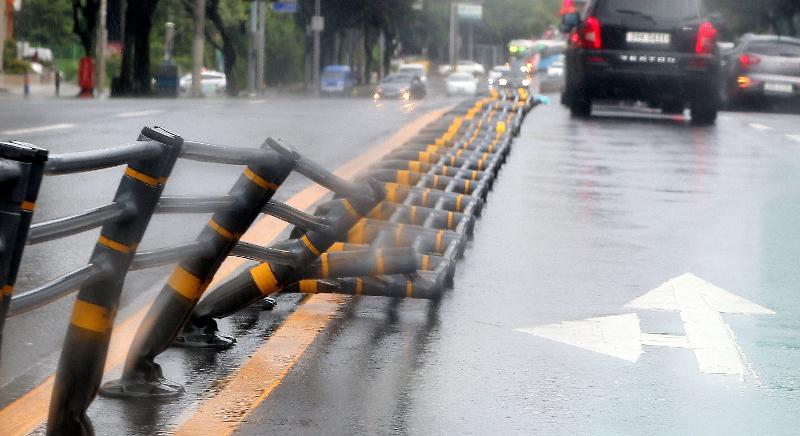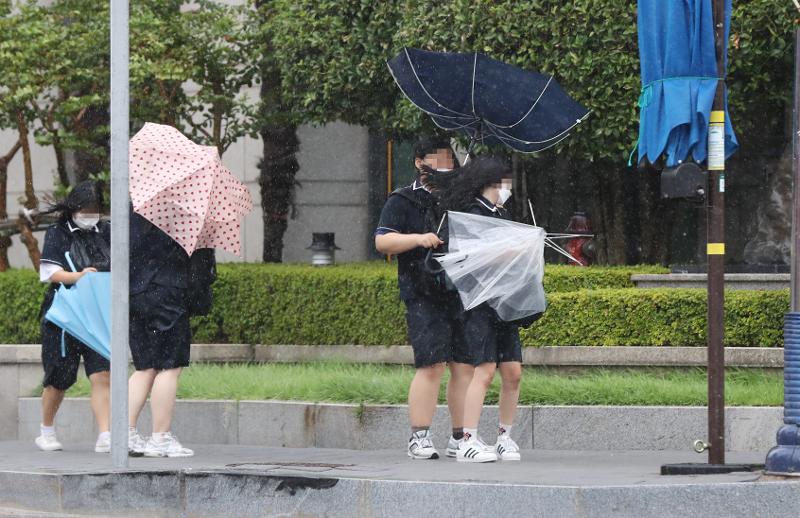
A tree on a street in the Orail-dong neighborhood of Jeju Island on Aug. 26 is ravaged by the season's eighth typhoon Bavi.
By Kim Young Deok and Lee Jihae
Photos = Yonhap News
The eighth typhoon of the season, Bavi, on Aug. 27 veered toward North Korea. Seoul went back to normal after the storm passed the city. A typhoon advisory for the capital was lifted at 9 a.m. that day.
Bavi's severity was classified as "very strong," which means it can blow away not only people but also huge boulders, and the storm's top speed was 47.3 m per second. This made Bavi the tenth strongest typhoon to hit the Korean Peninsula.
The Central Disaster and Safety Countermeasure Headquarters under the Ministry of the Interior and Safety announced that as of 6 a.m. on Aug. 27, Bavi damaged about 100 facilities including trees on streets, telephone poles and road medians. All flights and passenger ships crossing Jeju Island were canceled the day before due to the typhoon.
Despite Bavi's strength, the country suffered no loss of human life.

The median strip at the crossroads near Namnyeong High School on Jeju Island on Aug. 26 lay bent like molten taffy. Typhoon Bavi, with a top wind speed of 47.3 m per second, hit the island that day.

Entry to a dock is blocked in the Sanisu-dong neighborhood of Daejeong-eup Town in Jeju Island's city of Seogwipo, an area hit by Typhoon Bavi.

People on Aug. 26 struggle to keep their umbrellas open in the afternoon near Mokpo Station in Mokpo, Jeollanam-do Province, an area hit by Typhoon Bavi's strong winds.

The blue sky in Daejeon on Aug. 27 appears between dark clouds, with the city going back to normal after Typhoon Bavi passed.
Most popular
- Military discharge sets stage for reunion of all 7 BTS members
- BTS to mark 12th anniversary of debut with 2-week festival
- Lee Jae-myung officially sworn in as nation's 21st president
- Presidents Lee, Trump discuss tariff deal in first phone talks
- President's 1st executive order is launch of economic task force
